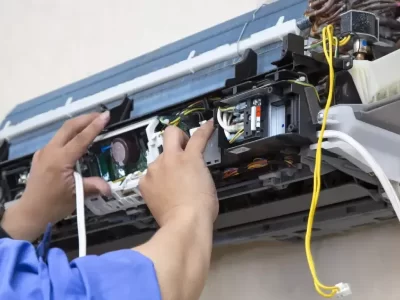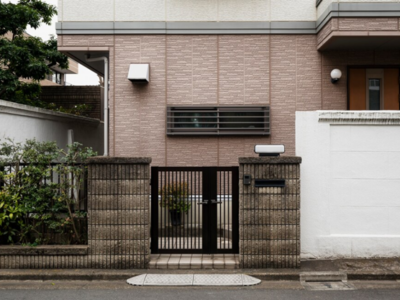So, you’ve been thinking about creating your own dream home?
Well, most of us will need a construction loan, since we might not have the cash on hand to build our dream home. This brings us to the world of construction loans.
But, how does a construction loan work? In terms of how money is disbursed and how the loan is structured, they vary from regular house loans. Construction loans are short-term loans used to finance the construction of a property.
Read on for our full breakdown of everything you need to know about construction loans.
What Is a Construction Loan?
A short-term, high-interest loan intended to fund the building of a residential property is known as a home construction loan.
Most construction loans have a one-year term. You must acquire a certificate of occupancy before occupying the property.
How Does a Construction Loan Work?
Construction loans frequently feature variable rates that swing up and down with the prime rate. Rates on construction loans are often higher than those on standard mortgage loans.
Mortgages are secured by your home in the form of collateral. If you default on your loan payments, the lender has the option of foreclosing on your home. Due to the fact that a house construction loan does not provide the lender this option, they are more likely to see these loans as high-risk.
Short-term construction loans are reliant on the successful completion of the project. As a result, you’ll have to provide the lender with information such as an estimated start date for building, detailed plans, and an affordable price range.
Once accepted, the lender will place the borrower on a draft or draw schedule. It’s one that corresponds to the project’s building phases. It’ll just include the interest payments required during that time.
The lender does not expect a single payment, as is the case with personal loans. Instead, you make payments over time. The construction of the new home is progressing at the same pace.
After the Project Is Done
The lender has an appraiser or inspector inspect the house at various stages of construction while it is being built. The lender pays extra payments to the contractor, known as draws if the appraiser approves. Expect between four and six inspections to keep track of your development.
Once you finish the property, the borrower may be able to convert the construction loan to a standard mortgage. Although, that depends on the kind of construction loan. It’s known as a construction-to-permanent loan.
If the loan is entirely for building, the borrower may be compelled to get a second mortgage to repay the construction loan.
Understanding the Types of Construction Loans: Construction-To-Permanent Loan
A construction-to-permanent loan allows you to borrow money to cover the costs of constructing your home. Then, the loan is converted to a permanent mortgage after the property is finished and you move in.
The advantage of using the construction-to-permanent route is that you only have to pay one set of closing charges. And, this lowers your total expenditures.
When the loan transitions from construction to permanent, it becomes a regular mortgage. After then, you make payments that include both interest and principal.
You may choose between a fixed-rate and an adjustable-rate mortgage at that time. An FHA construction-to-permanent loan comes with less severe approval conditions. Therefore, it may be extremely useful for certain borrowers. Or, you can go for a VA construction loan if you’re a qualified veteran — are your other possibilities.
Construction-Only Loan
A construction-only loan provides the finances needed to finish the home’s construction. But, the borrower is responsible for either paying the loan off in full at the end of the term. It’s usually one year or less) or getting permanent financing.
The borrower is solely liable for interest payments on the money obtained from these construction loans. Those are distributed depending on the percentage of the project completed.
Because you must complete two distinct loan procedures and pay two sets of fees, construction-only loans might be more expensive in the long run if you require a permanent mortgage. Closing expenses may run into hundreds of dollars, so avoiding another set is beneficial.
You can also explore spec construction loans and see if their terms suit your financial needs a bit better.
Renovation Loan
You may examine home renovation loan alternatives if you wish to renovate an existing house rather than create one. Depending on how much money you’re spending on the project, they might take a number of shapes.
If a homeowner wants to spend less than $20,000 on a remodeling, they can consider taking out a personal loan or using a credit card to pay for it. If the homeowner has built sufficient equity in their property, a home equity loan or line of credit may be acceptable for improvements beginning at $25,000 or less.
A cash-out refinancing, in which a homeowner takes out a new mortgage for a bigger amount than their existing loan and receives the difference in a lump sum, is another possible alternative in the present low mortgage rate climate.
The lender does not often need disclosure of how the homeowner intends to utilize the cash with any of these alternatives. The budget, the plan, and the payments are all managed by the homeowner.
Other types of financing require the lender to assess the builder, check the budget, and monitor the draw timeline.
Owner-Builder Construction Loan
Construction-to-permanent or construction-only loans in which the borrower also functions as the housebuilder are known as owner-builder loans.
Because of the intricacy of building a house and the skill necessary to comply with construction rules, most lenders will not allow the borrower to operate as their own builder. Lenders that do allow it usually only do so if the borrower is a licensed builder.
Construction Loan Guide: Simplified
Looking at the price points of property construction can make anyone feel a bit overwhelmed and for their wallets to run for the hills. Thankfully, through the strategic use of construction loans, the financial burden can ease a little.
We hope that our guide on how does a construction loan work has given you a solid headstart on how it all comes together. Next, you should check out our finance section for more tips and advice on how to lead a financially healthy life.












Comments